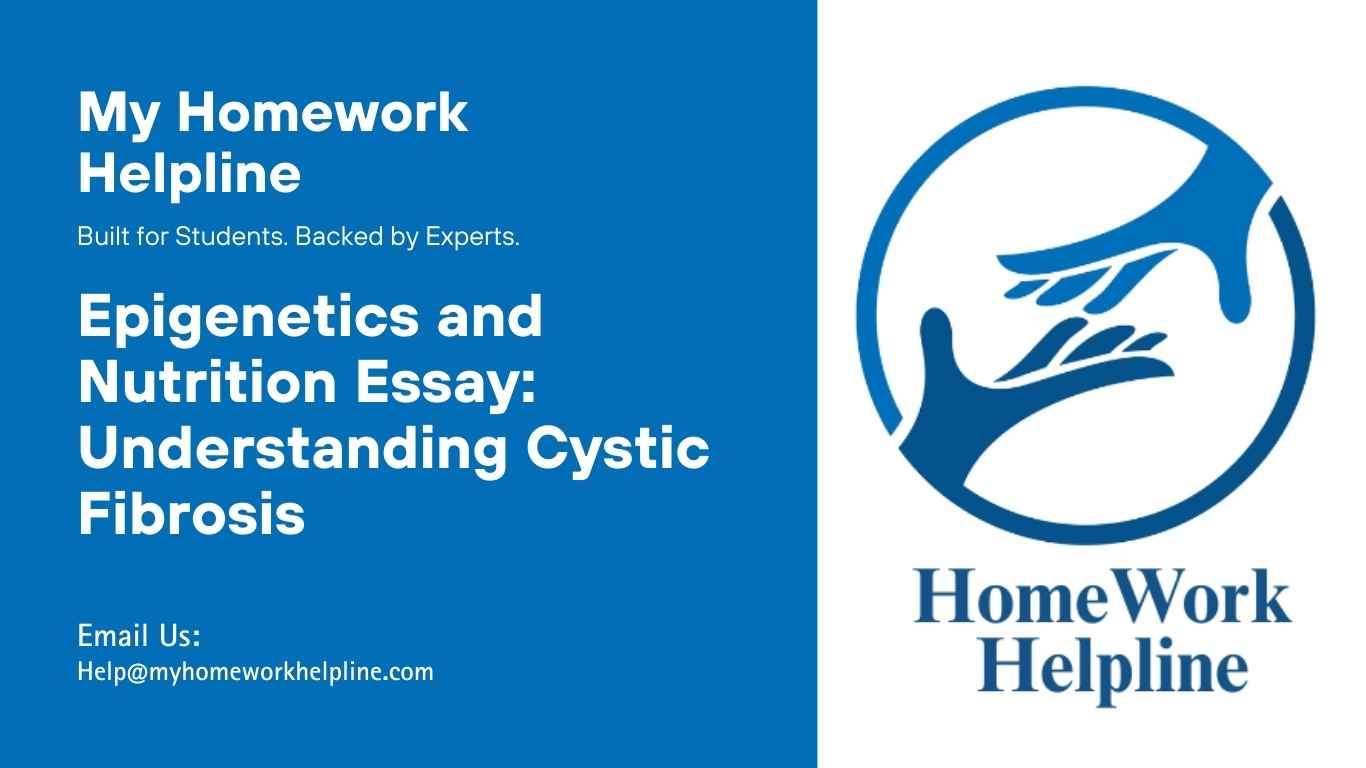Epigenetics and Nutrition: Essay on Cystic Fibrosis and Dietary Impact
The condition’s name is cystic fibrosis (CF).
It is an example of a recessive disorder. Mutations in the CFTR gene, which codes for the CFTR protein, are the root cause of cystic fibrosis. Mutations in the CFTR gene prevent the body from making or using the CFTR protein typically found in the lung and other cells (Cutting, 2015). That is why having CF requires changing both copies of the CFTR gene. Those who receive a mutated copy of the CFTR gene from one parent and a healthy copy from the other are categorized as “carriers” for cystic fibrosis. Although CF carriers do not suffer from the illness, they can pass on a faulty gene to their offspring.
People with cystic fibrosis should eat healthily. Low-fat versions of everyday foods are avoided as part of the CF diet. In addition, people with CF need a lot of salt in their diets.
Diets low in salt put persons with cystic fibrosis at risk of dehydration, malnutrition, and renal issues. The inability to absorb water and minerals results in dehydration, malnutrition, and renal issues if salt intake is inadequate.
Struggling with your nutrition or genetics essays? Our Nutrition Homework Helpline offers professional support to help you tackle topics like epigenetics, cystic fibrosis, and the impact of diet on health. We guide you through research, structure, and writing, ensuring your essay is accurate, insightful, and well-organized. Get expert assistance today to produce high-quality work, strengthen your understanding of complex concepts, and complete your projects with confidence and ease.
The Role of Macronutrients and Micronutrients in Human Health
Nutrition is the study of the effects of food and drinks on the human body, focusing on the primary nutrients required for human health. After digestion, most of the nutrients in food are absorbed by the small intestine and then transported by the circulatory system to various body regions for storage or utilization. Macronutrients provide a live organism’s metabolic system with the necessary energy to operate. Fats, proteins, and carbohydrates are all considered macronutrients. Metabolic processes rely on micronutrients, which offer crucial building blocks. Calcium, iron, vitamin C, minerals, and vitamins are all examples of micronutrients (Wakim & Grewal, 2021). Moreover, nutrients may be split into two groups: essential and non-essential nutrients. The human body cannot produce essential nutrients, at least not in adequate quantities, for proper functioning (Wakim & Grewal, 2021). However, the human body can produce enough of the non-essential nutrients it needs to operate normally. Carbohydrates, vitamins, minerals, water, proteins, and lipids are the six main types of nutrients based on their biochemical features.
References
Cutting, G. R. (2015). Cystic fibrosis genetics: from molecular understanding to clinical application. Nature Reviews Genetics, 16(1), 45-56.
Wakim, S., & Grewal, M. (2021, June 22). 7.1: Nutrients. Chemistry LibreTexts. Retrieved October 27, 2022, from https://chem.libretexts.org/Courses/Brevard_College/CHE_301_Biochemistry/07%3A_Nutrition/7.01%3A_Nutrients#:~:text=There%20are%20six%20major%20classes,the%20seventh%20class%20of%20nutrients.

